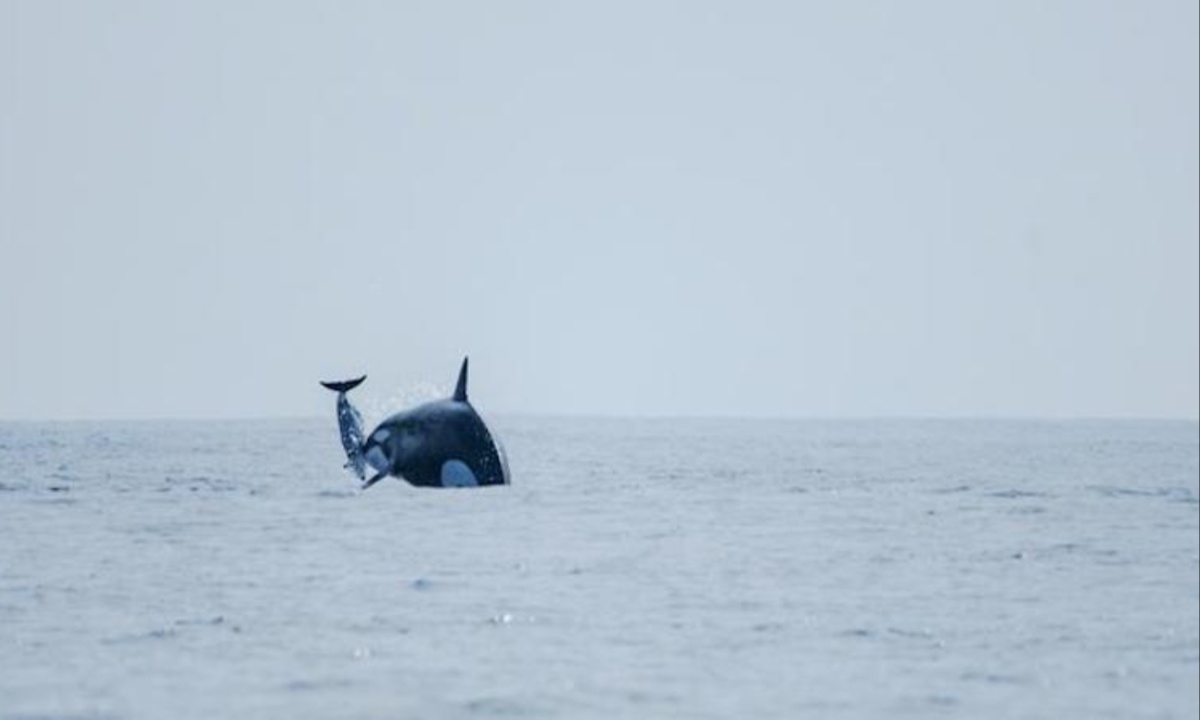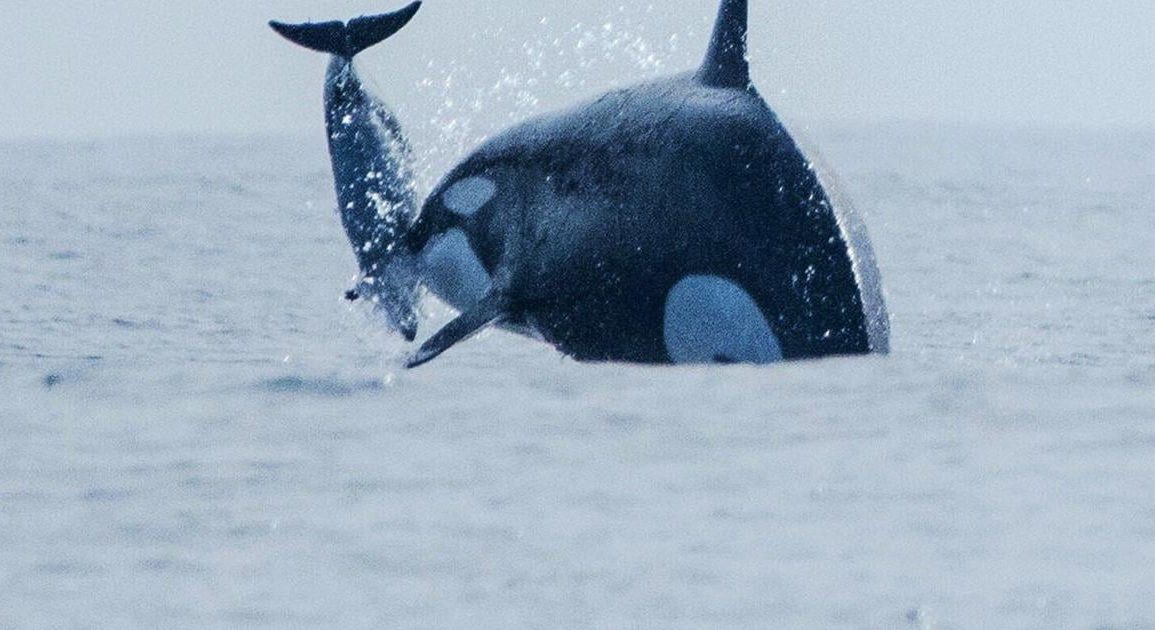In 2023, near the coastal waters of Chile, a killer whale (orca) was observed attacking and killing a dusky dolphin. The orca easily overpowered the smaller dolphin, tossing it out of the water before feeding on it. Other orcas quickly joined the feast, sharing the meal.
This event was captured on video by researchers nearby, marking the first time such behavior involving dusky dolphins had been documented in the Humboldt Current system.
The orcas in the Humboldt Current, flowing along South America’s western coast, are not as well-studied as those in other regions. While orcas worldwide share certain characteristics, different groups, or ecotypes, have distinct behaviors, including hunting techniques.
The Humboldt Current orcas, however, have yet to be assigned to a specific ecotype. The recent observations of them hunting dusky dolphins offer new insights into their feeding habits and may provide clues about their classification.
Despite the orcas’ presence in the area, much remains unknown about them. Marine biologists, such as lead study author Ana Maria García Cegarra, have been gathering data on these orcas for over a decade.

By analyzing reports from local fishers and whale-watching tours, as well as conducting boat surveys, the researchers have identified at least two distinct social groups of orcas in the region, each consisting of five to six individuals. These groups are typically led by a matriarch and include her descendants.
The recent sightings of orcas hunting dusky dolphins are significant. In one instance, a female orca was seen tossing a dolphin into the air and then sharing it with her pod. The researchers noted that the orcas do not exclusively hunt dolphins; they also prey on other marine animals like seals, sea turtles, and penguins.
There is even evidence suggesting they might hunt fin whales, which are similar to sei whales, another prey of orcas in nearby Chilean waters.
The orcas of the Humboldt Current may be part of the Type A ecotype, which is known to prey on dusky dolphins in the Southern Hemisphere. However, the Humboldt orcas have a smaller white eye patch than typical Type A orcas, making their exact classification uncertain.
Genetic analysis of skin samples could help resolve this, but no such samples were collected during this study. Understanding the orcas’ behavior and diet is essential for conservation efforts, especially as they are currently categorized as “data deficient” by conservation organizations.
Beyond hunting strategies, researchers are also interested in orca social behaviors. Orcas are known for their complex social structures and interactions, which vary by population.
In one noteworthy observation, an orca calf approached the scientists’ boat with dolphin meat, possibly offering to share. While this behavior is not fully understood, it highlights the need for further research into orca social dynamics and how they teach these behaviors to their young.
Documenting orca hunts is rare because these animals travel quickly and over great distances. As García Cegarra pointed out, it is largely a matter of luck to encounter orcas during such moments in the wild. Nevertheless, continued research on the Humboldt Current orcas will provide valuable information about their habits and help guide efforts to protect them and their ecosystem.

